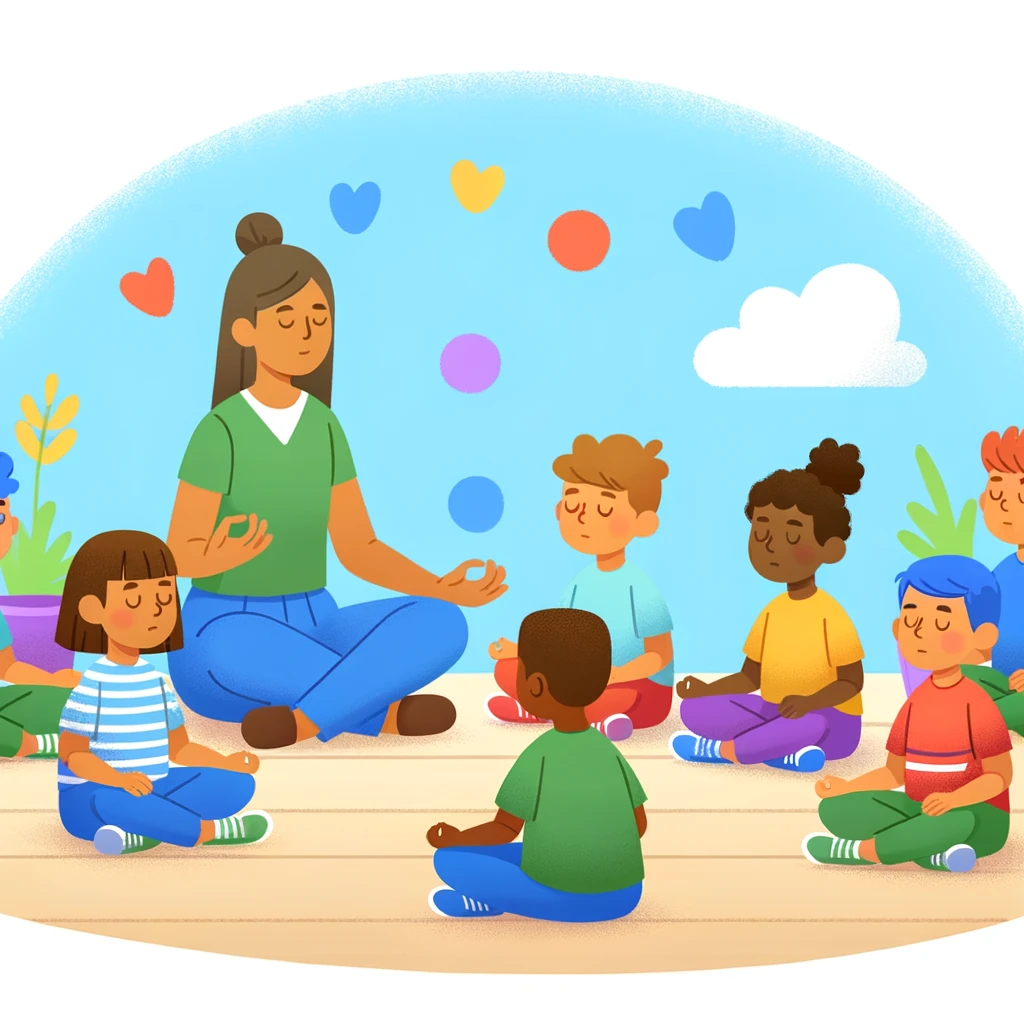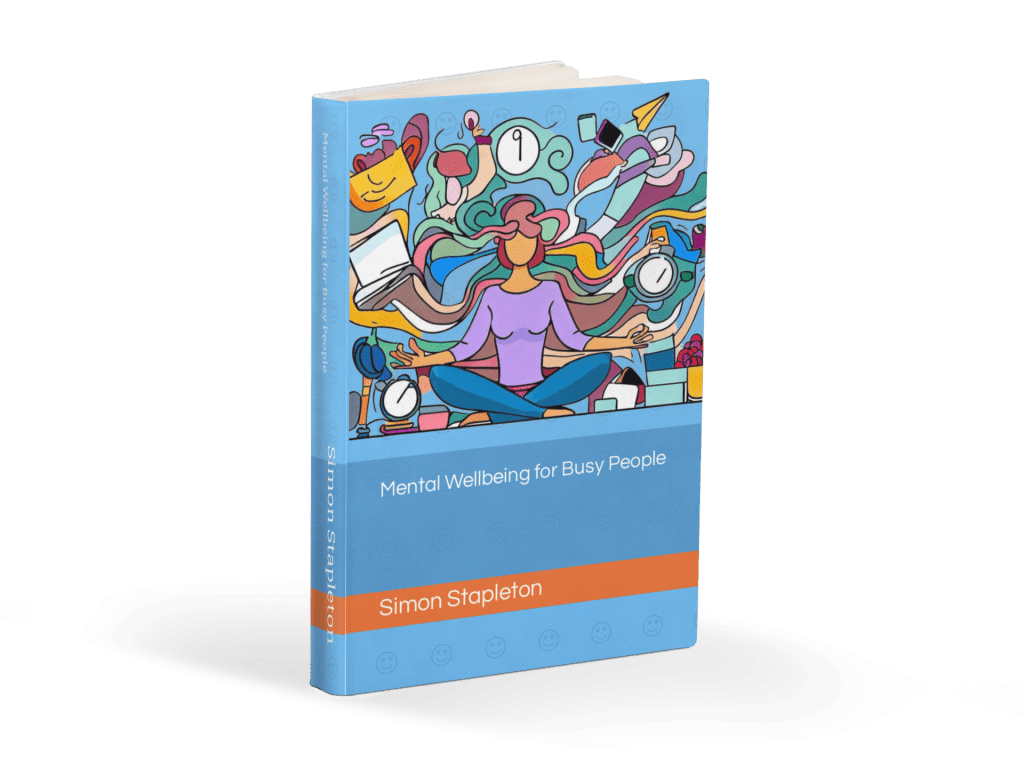Estimated reading time: 10 mins
Our world is constantly buzzing with activity, and our senses are perpetually bombarded by stimuli. Our minds are always juggling numerous thoughts, mindfulness emerges as a beacon of tranquility and self-awareness. But what exactly is mindfulness? It’s a term we often hear, but its depth and transformative potential are not always fully understood.

Mindfulness is a mental state achieved by focusing one’s awareness on the present moment, while calmly acknowledging and accepting one’s feelings, thoughts, and bodily sensations. It’s a therapeutic technique, a way of being, that has its roots in ancient meditation practices.
The Origins of Mindfulness
Mindfulness, as a concept and practice, has roots that are both ancient and diverse, stretching across various cultures and philosophies. Predominantly, it draws its origins from Eastern spiritual traditions, with a significant influence from Buddhism. In Buddhism, mindfulness is part of a larger framework of teachings focused on understanding the nature of the mind and reality. It’s closely associated with the practice of meditation and the development of insight and compassion.
However, it is not exclusively Buddhist. Elements of it can be found in other Eastern traditions such as Hinduism and Taoism, which also emphasize the importance of awareness and living in harmony with the present moment. These traditions share the idea that mindfulness is a way to cultivate a deep and abiding presence and awareness, offering a path to greater understanding and harmony with the world.
In these ancient contexts, mindfulness was more than just a practice; it was a way of life, an integral part of a philosophical and spiritual journey towards enlightenment and self-realization. The practice involved a continuous, conscious awareness of one’s thoughts, feelings, and sensations, fostering a profound connection with the inner self and the external world.
In the 20th century, mindfulness found a new expression in the West. Pioneers like Jon Kabat-Zinn brought mindfulness into the realm of secular practice, distilling its essence into a non-religious form that could be easily integrated into modern life. This adaptation was instrumental in popularizing mindfulness in Western societies, leading to its application in diverse fields such as psychology, medicine, education, and business.
Today, while it retains its spiritual connotations in many Eastern practices, in the Western world, it is often approached as a practical tool for enhancing mental and emotional well-being, separate from its religious origins. This evolution reflects the universal appeal of mindfulness and its capacity to transcend cultural and religious boundaries, offering a timeless and adaptable path to greater peace, clarity, and understanding.
Understanding Mindfulness in Daily Life
Understanding mindfulness in daily life involves recognizing that it’s not just a set form of meditation but a versatile approach to living. It’s about bringing a quality of attention and presence to whatever we’re doing, whether it’s mundane or significant. This means being fully engaged in the present task or experience, paying attention to our thoughts, emotions, and bodily sensations in a given moment without judgment.


Incorporating mindfulness into everyday life can be as simple as truly listening when someone speaks, rather than planning what to say next. It’s about savoring the food we eat, noticing its taste, texture, and aroma, rather than mindlessly eating while distracted. It is feeling the water on our hands while washing dishes, recognizing the sensation of our feet on the ground as we walk, or simply pausing to take a few deep breaths and center ourselves amidst a busy day.
These small acts of mindfulness can significantly enrich our daily experiences. They enable us to live more consciously and fully, reducing the autopilot mode that often governs our lives. By cultivating this heightened awareness, we develop a greater appreciation for life’s simple pleasures, become more attuned to our personal needs and the needs of others, and navigate our days with increased clarity and calm.
The Benefits of Mindfulness
The benefits of mindfulness are multifaceted and profound, impacting various aspects of our lives from mental and emotional well-being to physical health, and even our interactions with others.
Mental and Emotional Benefits
Mindfulness has a significant positive effect on mental wellbeing. One of the most immediate benefits is stress reduction. Regular practice helps in managing and reducing the physiological and psychological effects of stress, leading to improved mood and a sense of calmness. This is particularly important in our fast-paced, high-pressure modern world, where chronic stress is a common ailment.
Beyond stress reduction, it has been shown to decrease symptoms of anxiety and depression. By fostering an ability to observe thoughts and feelings without judgment, mindfulness allows individuals to break free from negative thought patterns. This increased mental awareness and clarity can also enhance cognitive functions, leading to improved concentration, memory, and decision-making skills.
Physical Health Benefits
The benefits of mindfulness extend to physical health as well. Regular practice can lead to reductions in biomarkers of stress, such as cortisol, which can have wide-ranging effects on the body. Lower stress levels are linked to reduced risk of stress-related illnesses, including heart disease, hypertension, and autoimmune disorders.


Mindfulness techniques have been used effectively to manage chronic pain. By focusing attention away from the pain and reducing the stress and emotional reaction to it, individuals can experience a decrease in pain intensity and an improvement in quality of life.
Additionally, mindfulness practices have been associated with improved sleep quality. By calming the mind and reducing the tendency to ruminate on worries or stresses, individuals find it easier to fall asleep and have more restful sleep.
Mindfulness and Relationships
Mindfulness can profoundly impact personal relationships. By increasing empathy and compassion, mindfulness helps individuals in understanding and connecting with others on a deeper level. Mindful communication, where one listens attentively and speaks thoughtfully, can lead to healthier and more fulfilling relationships.
Mindfulness and Self-awareness
At its core, mindfulness enhances self-awareness. This heightened self-awareness leads to a better understanding of oneself, fostering personal growth and self-acceptance. People who practice mindfulness regularly often report a stronger sense of inner peace and overall well-being.
Mindfulness in the Workplace
In the workplace, mindfulness has been linked to increased productivity and creativity. It helps in managing work-related stress and improving job satisfaction. Employers are increasingly recognizing these benefits, leading to a growing interest in mindfulness programs in corporate settings.
Long-term Benefits
The long-term benefits of mindfulness can be transformative. Regular practitioners often report a sustained decrease in overall stress and anxiety levels and an increased capacity to handle life’s challenges with resilience and equanimity. This ongoing practice can lead to a deeper sense of contentment and fulfillment in life.
In summary, the practice of mindfulness offers a range of benefits that encompass mental and physical health, personal relationships, and professional effectiveness. It’s a tool that not only helps in coping with the challenges of the modern world but also enhances the overall quality of life.
Mindfulness in Practice
Mindfulness can be practiced in various forms, but the essence remains the same – being present and fully engaged with whatever is happening, free from distraction or judgment.
Mindfulness Meditation
This is a formal way to practice mindfulness. It involves sitting quietly and focusing on your breath, a word, or a phrase. The objective is to bring your attention back to the present whenever your mind wanders.


Mindful Everyday Activities
Mindfulness can be incorporated into daily activities. This involves fully engaging in the present activity – feeling the water on your skin when washing dishes, noticing the flavors of your food, or being aware of the sensation of your feet touching the ground while walking.
Challenges in Practicing Mindfulness
Despite its simplicity, mindfulness can be challenging, especially in a culture that values multi-tasking and constant productivity. Our minds are used to being overstimulated, making it difficult to slow down and focus on the present. However, like any skill, mindfulness can be developed with practice.
Common Misconceptions
A common misconception is that mindfulness is about emptying the mind of thoughts. This is not the case. It is about noticing thoughts and sensations without getting entangled in them. It’s about observing them come and go, like clouds passing in the sky.


Mindfulness and Mental Health
It has been integrated into various therapeutic approaches to enhance mental health. Mindfulness-based stress reduction (MBSR) and mindfulness-based cognitive therapy (MBCT) are two prominent examples. These therapies use mindfulness to help people deal with stress, anxiety, depression, and other mental health issues.
The Role of Mindfulness in Stress Reduction
MBSR, developed by Dr. Jon Kabat-Zinn, is a structured program that teaches mindfulness meditation as a tool to cope with stress. It helps individuals recognize and break free from habitual, negative reactions to everyday stressors.
Mindfulness in Cognitive Behavioral Therapy
MBCT combines cognitive behavioral techniques with mindfulness strategies. It is particularly effective in preventing relapse in people who have been previously treated for depression, helping them to recognize and distance themselves from harmful thought patterns.
Integrating Mindfulness into Your Life
Starting a mindfulness practice doesn’t require major changes to your daily routine. It can begin with dedicating a few minutes each day to mindfulness meditation or simply bringing more awareness to your daily activities.
Tips for Beginners
- Start Small: Begin with a few minutes of meditation each day and gradually increase the duration.
- Focus on the Breath: Use your breath as an anchor to the present moment.
- Be Patient: Understand that it’s normal for the mind to wander.
- Practice Regularly: Consistency is key in building the mindfulness habit.
- Integrate Mindfulness into Daily Activities: Try to do regular tasks mindfully.
Mindfulness for All Ages
Mindfulness is a tool that’s beneficial for all ages. In schools, mindfulness programs have been shown to improve students’ attention, self-control, emotional resilience, and overall mental health. For the elderly, it can enhance quality of life, reducing feelings of loneliness and promoting emotional well-being.


Mindfulness in the Workplace
The application of mindfulness in the workplace has gained considerable attention in recent years, as employers and employees alike recognize its potential to enhance professional environments and outcomes. Mindfulness in the workplace goes beyond individual benefits, contributing to a healthier, more productive, and more positive organizational culture.
Enhancing Focus and Productivity
One of the primary benefits of mindfulness in the workplace is its ability to enhance focus and concentration. In a world where multitasking and digital distractions are the norm, mindfulness helps employees to direct their attention more effectively, leading to increased productivity. This focused attention allows for more efficient task completion and a higher quality of work.
Reducing Stress and Burnout
Workplace stress is a significant concern, often leading to burnout. Mindfulness practices help employees manage stress by promoting relaxation and providing tools to cope with demanding work environments. Regular mindfulness practice can mitigate the effects of job-related stress, contributing to greater job satisfaction and overall well-being.
Improving Communication and Relationships
Mindfulness enhances emotional intelligence, a critical skill in the workplace. It fosters empathy and active listening, leading to more effective and compassionate communication. This can improve team dynamics, resolve conflicts more constructively, and build more collaborative and supportive work relationships.
Fostering Leadership Qualities
Mindfulness also positively impacts leadership qualities. Leaders who practice mindfulness are often more resilient, able to make decisions with greater clarity and are more approachable. They tend to create a work environment that values presence, attentiveness, and empathy, which can be inspiring and motivating for their teams.
Encouraging Innovation and Creativity
Mindfulness clears mental clutter, allowing for more creative and innovative thinking. In a relaxed state of mind, employees are more likely to come up with new ideas and solutions to problems, driving the company’s growth and adaptation in a competitive market.
Implementing Mindfulness Programs
Recognizing these benefits, many organizations are implementing mindfulness programs. These can include structured meditation sessions, mindfulness workshops, and even integrating mindful moments into the workday, such as beginning meetings with a minute of silence or encouraging mindful breathing exercises during breaks.


The Future of Mindfulness
As we continue to face the challenges of a fast-paced, high-stress world, the role of mindfulness becomes even more critical. It’s a tool that can help us navigate our lives with more clarity, compassion, and calmness. It is more than just a practice; it’s a way of life, a path to living more fully and authentically.
I Wrote a Book About Mindfulness


I didn’t write this post to plug my book, but as you’re reading you’ll no doubt be curious about mindfulness, so I would like to offer it to you as a way forward. My book, ‘Mental Wellbeing for Busy People‘ was written for people in your situation, and it will provide the tools and strategies, just as above, in a way that will satisfy your curiosity. It’s available in kindle and paperback formats (hardback is imminent.)
Conclusion
Mindfulness, at its core, is about living life with greater awareness, balance, and acceptance. It’s a journey of learning to be present in each moment, embracing the fullness of our experience with an open heart and a calm mind. As we cultivate it, we open ourselves to the richness of everyday life, finding peace and joy in the ordinary and the extraordinary alike.
